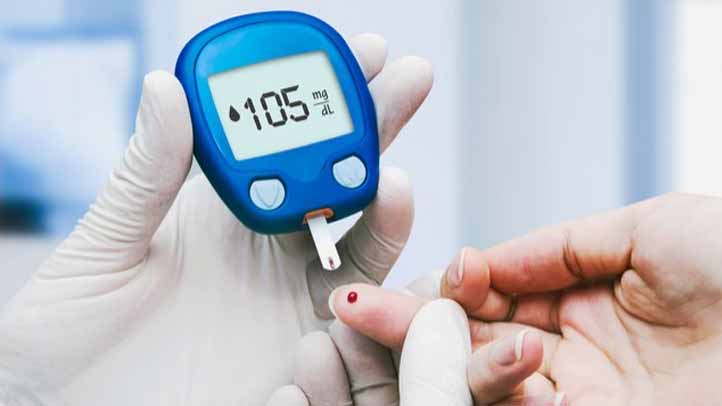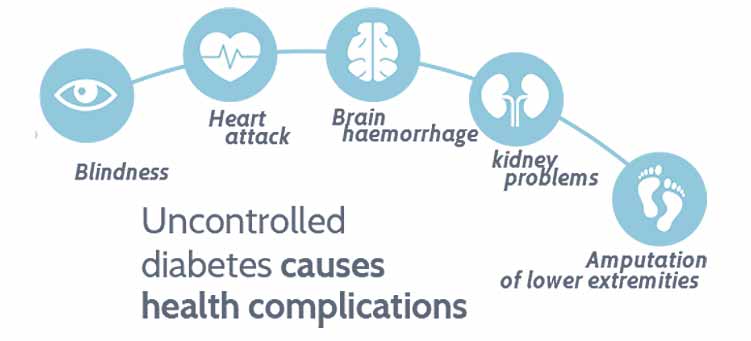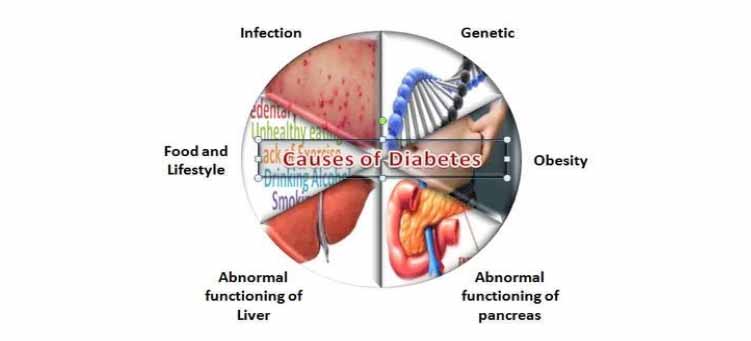Diabetes Tests and diagnosis – Symptoms of type 1 diabetes often appear suddenly and are often the reason for checking blood sugar levels. Because symptoms of other types of diabetes and prediabetes come on more gradually or may not be evident, the American Diabetes Association (ADA) has recommended screening guidelines. The ADA recommends that the following people be screened for diabetes:
- Anyone with a body mass index higher than 25, regardless of age, who has additional risk factors, such as high blood pressure, a sedentary lifestyle, a history of polycystic ovary syndrome, having delivered a baby who weighed more than 9 pounds, a history of diabetes in pregnancy, high cholesterol levels, a history of heart disease, and having a close relative with diabetes.
- Anyone older than age 45 is advised to receive an initial blood sugar screening, and then, if the results are normal, to be screened every three years thereafter.
Tests for type 1 and type 2 diabetes and prediabetes
- Glycated hemoglobin (A1C) test. This blood test indicates your average blood sugar level for the past two to three months. It measures the percentage of blood sugar attached to hemoglobin, the oxygen-carrying protein in red blood cells. The higher your blood sugar levels, the more hemoglobin you’ll have with sugar attached. An A1C level of 6.5 percent or higher on two separate tests indicates that you have diabetes. An A1C between 5.7 and 6.4 percent indicates prediabetes. Below 5.7 is considered normal.
If the A1C test results aren’t consistent, the test isn’t available, or if you have certain conditions that can make the A1C test inaccurate — such as if you’re pregnant or have an uncommon form of hemoglobin (known as a hemoglobin variant) — your doctor may use the following tests to diagnose diabetes:
- Random blood sugar test. A blood sample will be taken at a random time. Regardless of when you last ate, a random blood sugar level of 200 milligrams per deciliter (mg/dL) — 11.1 millimoles per liter (mmol/L) — or higher suggests diabetes.
- Fasting blood sugar test. A blood sample will be taken after an overnight fast. A fasting blood sugar level less than 100 mg/dL (5.6 mmol/L) is normal. A fasting blood sugar level from 100 to 125 mg/dL (5.6 to 6.9 mmol/L) is considered prediabetes. If it’s 126 mg/dL (7 mmol/L) or higher on two separate tests, you have diabetes.
- Oral glucose tolerance test. For this test, you fast overnight, and the fasting blood sugar level is measured. Then you drink a sugary liquid, and blood sugar levels are tested periodically for the next two hours. A blood sugar level less than 140 mg/dL (7.8 mmol/L) is normal. A reading of more than 200 mg/dL (11.1 mmol/L) after two hours indicates diabetes. A reading between 140 and 199 mg/dL (7.8 mmol/L and 11.0 mmol/L) indicates prediabetes.
If type 1 diabetes is suspected, your urine will be tested to look for the presence of a byproduct produced when muscle and fat tissue are used for energy when the body doesn’t have enough insulin to use the available glucose (ketones). Your doctor will also likely run a test to see if you have the destructive immune system cells associated with type 1 diabetes called autoantibodies.
Tests for gestational diabetes
Your doctor will likely evaluate your risk factors for gestational diabetes early in your pregnancy:
- If you’re at high risk of gestational diabetes — for example, if you were obese at the start of your pregnancy, you had gestational diabetes during a previous pregnancy, or you have a mother, father, sibling or child with diabetes — your doctor may test for diabetes at your first prenatal visit.
- If you’re at average risk of gestational diabetes, you’ll likely have a screening test for gestational diabetes sometime during your second trimester — typically between 24 and 28 weeks of pregnancy.
Your doctor may use the following screening tests:
- Initial glucose challenge test. You’ll begin the glucose challenge test by drinking a syrupy glucose solution. One hour later, you’ll have a blood test to measure your blood sugar level. A blood sugar level below 140 mg/dL (7.2 to 7.8 mmol/L) is usually considered normal on a glucose challenge test, although this may vary at specific clinics or labs. If your blood sugar level is higher than normal, it only means you have a higher risk of gestational diabetes. Your doctor will order a follow-up test to determine if you have gestational diabetes.
- Follow-up glucose tolerance testing. For the follow-up test, you’ll be asked to fast overnight and then have your fasting blood sugar level measured. Then you’ll drink another sweet solution — this one containing a higher concentration of glucose — and your blood sugar level will be checked every hour for a period of three hours. If at least two of the blood sugar readings are higher than the normal values established for each of the three hours of the test, you’ll be diagnosed with gestational diabetes.
July 31, 2014



